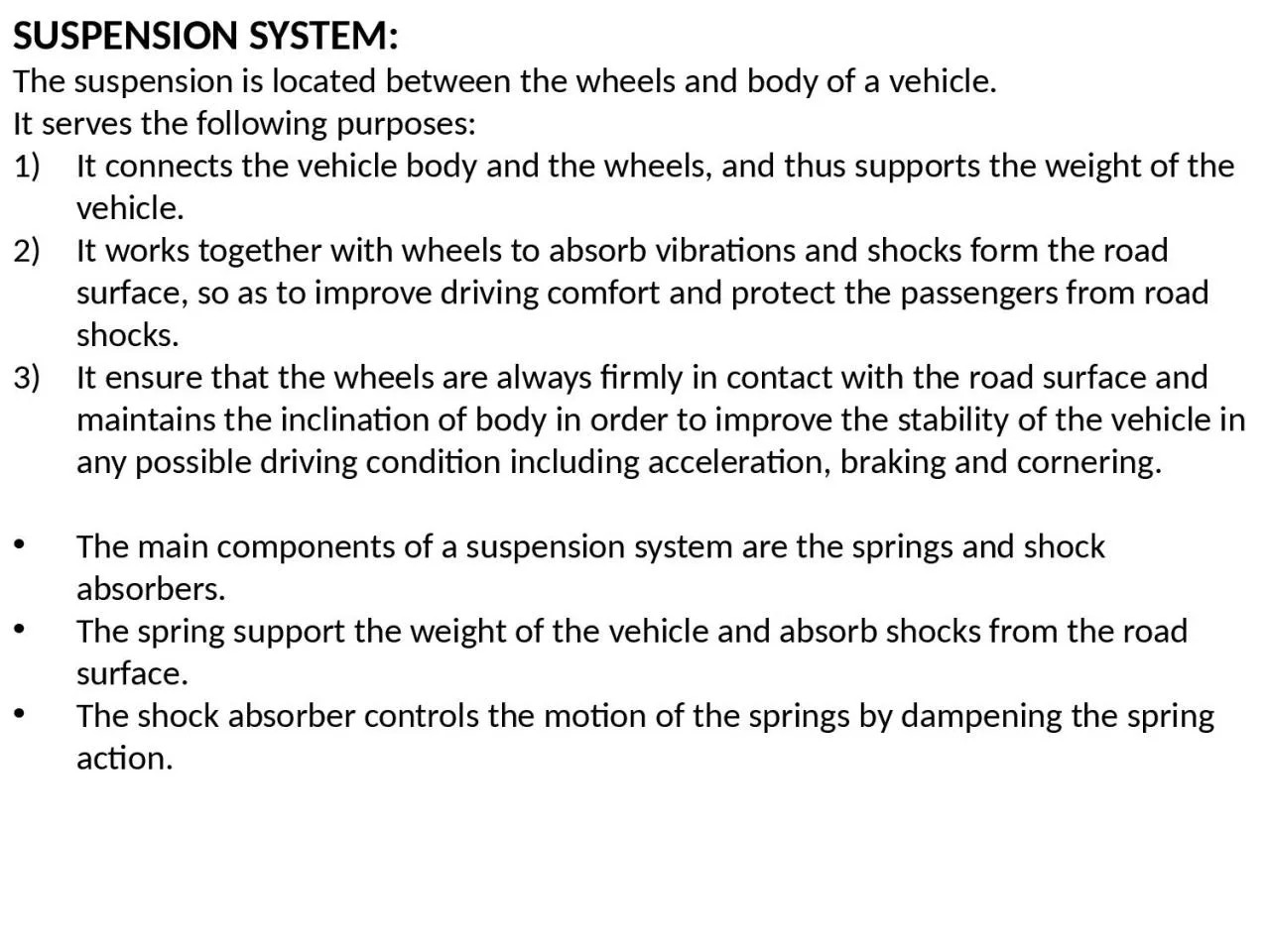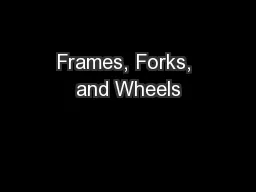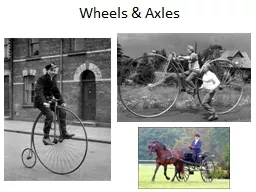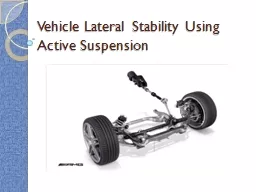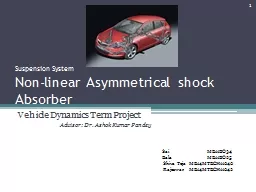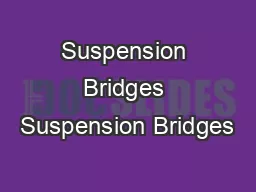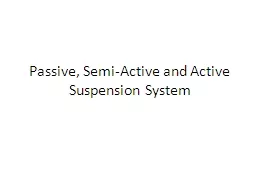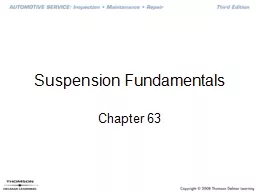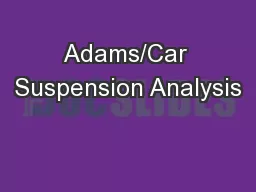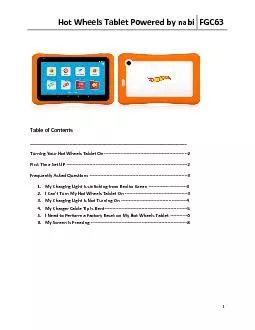PPT-SUSPENSION SYSTEM: The suspension is located between the wheels and body of a vehicle.
Author : mackenzie | Published Date : 2023-11-16
It serves the following purposes It connects the vehicle body and the wheels and thus supports the weight of the vehicle It works together with wheels to absorb
Presentation Embed Code
Download Presentation
Download Presentation The PPT/PDF document "SUSPENSION SYSTEM: The suspension is loc..." is the property of its rightful owner. Permission is granted to download and print the materials on this website for personal, non-commercial use only, and to display it on your personal computer provided you do not modify the materials and that you retain all copyright notices contained in the materials. By downloading content from our website, you accept the terms of this agreement.
SUSPENSION SYSTEM: The suspension is located between the wheels and body of a vehicle.: Transcript
Download Rules Of Document
"SUSPENSION SYSTEM: The suspension is located between the wheels and body of a vehicle."The content belongs to its owner. You may download and print it for personal use, without modification, and keep all copyright notices. By downloading, you agree to these terms.
Related Documents

